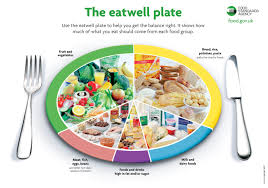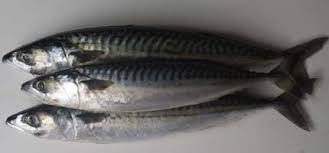Sport and nutrition are intertwined as the correct diet can help to maximise performance
.
The Royal Society For Public Health (RSPH) have just released a new qualification for sports nutrition.
This is an accredited qualification and of great assistance to those involved with training and coaching.
Most people will be pleased to hear` that there are no exams but assessment is via assignments.
for more information please contact me or go to the RSPH website
Saturday, 24 November 2012
Sunday, 11 November 2012
CHRISTMAS PUDDING
Christmas pudding
Stir up Sunday --the day we are encouraged to make Christmas Puddings and cakes is not until 25th November but this will give you chance to buy ingredients.
Having looked at most luxury style Christmas puddings as
well as recipes for homemade ones using traditional ingredients like suet in
them I found that most provided around 600kacls and 80g carbohydrate per
portion. So I was given the challenge of developing a lower calorie and
carbohydrate pudding.
This is what I made and it makes 8 small portions and each
portion provides 204kcal 43g carbohydrate, 1.4 g fat, 0.3g saturated fat and
0.3g salt.
It was quick to make and also cheap. It will not keep so make it only the day before or freeze.
Ingredients
200g dried mixed fruit
100ml water
10 ml red wine
1 tbsp oat bran
I tbsp black treacle
200g self raising flour
1 tsp mixed spices
1 420g can of prunes drained
1 egg
Mix the wine and water together (I just washed out a wine
bottle)
Pour the dried fruit into a dish
Pour on the wine and water mixture
Leave overnight in the fridge.
This soaking step is important as it plumps up the fruit.
To this mix add the oat bran and return the dish to the
fridge
Take the stones out of the prunes and puree—if you have not
got a liquidiser a potato masher works well
Add to the mix, then add the treacle and mix through.
Sift together the flour and spices and add to the mix
Finally beat in the egg
If the mix seems a bit dry add a little skimmed milk
Pour into a one and a half pint basin and smooth down
Alternatively pour into 8 small basins
Put in the microwave and cook for 7 minutes on high
Take out of the microwave and let stand for 5 minutes
Cook again for 7 minutes on high and again let stand
Test the inside is cooked with a knife or skewer –if not
cooked –then cook again for 5 minutes and allow to stand then check it
The smaller puddings will cook more quickly and so will a
pudding in a shallower basin
The pudding will not keep for long so freeze it or cook a
day or so before required.
If you do not want to cook in a microwave it can be baked
for an hour in a medium oven in a covered basin stood in a bowl of water.
Serve with custard or ice cream or as it is very low in fat
a little brandy butter
Variations
You can use all wine, port or brandy to soak the fruit if
you wish but this will boost the calories.
If you do not want to use alcohol soak the fruit in apple
juice
Extra fruit can be added to the mixed dried fruit –dried
cranberries are nice
If you want to have a cold pudding the soaked mixed dried fruit
with added cranberries soaked in alcohol or fruit juice goes well with vanilla
ice cream. You can even layer this up in a pudding basin and freeze it.
If you want to use puree apples instead of the prunes it
will give a paler colour
PS
If you do not want to cook a pudding them many of the supermarkets economy puddings seemed to be lower in calories than the luxury ones.Sunday, 14 October 2012
DIABETES CONFERENCE
Yesterday the Insulin Dependant Diabetes Trust http://www.iddt.org/ held their annual
conference at the Park Hotel in Kettering.
Diabetes is a major problem and affects about 3 million
people with more estimated to have the condition and not know it.
There are 2 types of diabetes;
- Type 1 which needs insulin for treatment and type 2 which can be often managed by diet and medication.
- Type 2 diabetes also tends to be linked with obesity and the onset is slower and often people do not know they have it
- About 90% of people have type 2 diabetes
- Signs and symptoms of type 2 diabetes tend to be tiredness, passing extra urine, feeling thirsty and needing to drink more plus repeated infections of various types
- If you feel you have a problem do go and discuss this with your doctor or nurse
Sunday, 23 September 2012
BONE HEALTH
BONE HEALTH
Unfortunately 1in 2 women and 1in 5 men over the age of 50 years will break a fracture as a result of poor bone health
Bones require adequate calcium which is derived from foods like milk, cheese, yogurt (if you do not take these use a fortified form of soya milk or rice milk), fish with small bones provide calcium. White flour is also fortified with calcium.
Vitamin D is required for the absorption of calcium. This important vitamin is made by the action of sunlight on the skin. Unfortunately this year there has been about 50% of the days being rainy during the summer which obviously means that the synthesis of vitamin D is reduced.
There are a limited number of food sources like oily fish, butter and spreads, full fat milk and cheese made from it, egg yolks, fortified breakfast cereals, liver and red meat.
If you do not eat these foods it is wise to look at a supplement of vitamin D
Sunday, 16 September 2012
MEDITERRAENEAN DIET

The Mediterranean diet is associated with health and longevity it advocates
- lots of fruit and vegetables
- nuts and pulses
- low GI carbohydrates
- herbs and spices
- some olive oil
- fish twice per week
- poultry, eggs and cheese moderate portions daily
- sweets and red meat less often
THE PYRAMID WAS PRODUCED BY OLDWAYS http://oldwayspt.org/
About Oldways
Oldways is a nonprofit food and nutrition education organisation, with a mission to guide people to good health through heritage.Tuesday, 28 August 2012
Diet and Diabetes
It is well established that diet is helpful in diabetes.
For those with type 1 diabetes balancing the amount of carbohydrate with the insulin injected is important
For those with type 2 diabetes watching the amount of calories if overweight is helpful
Further information can be found at the Insulin Dependent Diabetes Trust
http://www.iddt.org/news/newsletters/
http://www.iddt.org/news/type-2-and-you/

For those with type 1 diabetes balancing the amount of carbohydrate with the insulin injected is important
For those with type 2 diabetes watching the amount of calories if overweight is helpful
Further information can be found at the Insulin Dependent Diabetes Trust
http://www.iddt.org/news/newsletters/
http://www.iddt.org/news/type-2-and-you/
Sunday, 19 August 2012
CAKES
Cakes can make a lovely treat especially if home made. They can also incorporate fruit and vegetables.
Hereis my recipe for Beetroot cake
Hereis my recipe for Beetroot cake
Chocolate beetroot cake per portion NB provides extra vegetables
Makes 12 slices
Energy kcal 329 per slice
Ingredients
3oz (75g) cocoa or chocolate drink powder
6oz (180g ) plain flour –can use 5oz white and 1 oz
wholemeal
8 oz (225g) sugar
2tsp baking powder
250g cooked and cooled beetroot
3 large eggs
200ml sunflower oil
1tsp vanilla extract
Icing sugar for dusting
Method
Pre-heat oven to 180 C/335F/gas4
Sift dry ingredients together in a bowl
Puree the beetroot
In a separate bowl mix the eggs one at a time with the oil
and vanilla essence when smooth add the sugar. Add the puree beetroot
Make a well in the middle of the dry ingredients and add the
beetroot and oil and sugar mixture
Mix well
Pour into a greased and lined 9inch cake tin
Bake 30-40 mins or until firm and a skewer inserted in the
cake leaves it cleanly
Dust with icing sugar
The cake can be split and filled with cream if desired or
iced
Friday, 10 August 2012
Book

Books on nutrition abound and mine on "Nutrition and Health" is designed to provide information on nutrition to both students of the subject and a wider audience.
I have been pleased to have a 4th edition of this book published.
It has been reviewd by Azimina Govindji the Award -winning dietitian and Media Nutritionist seen on the One Show www.azminanutrition.com/
Monday, 6 August 2012
Sports drinks

Hydration is vital for anyone especially those involved in sport and activity.
Water is excellent but isotonic drinks are really useful to replenish.
Isotonic means in balance with the body fluids. So these drinks replace nutrients lost during activity.
While there are lots on the market here are my simple home made ones. Both very cheap to make.
Mabel's isotonic drink 1
400g glucose ( very cheap from a chemist or supermarket)
1 litre water
splash of low calorie squash for flavour
pinch of salt
Mabel's isotonic drink 2
500 ml fruit juice such as apple or orange
500ml water
pinch of salt
For rapid absorption both are better taken un-chilled
Wednesday, 18 July 2012
TRAINING

TRAINING IN NUTRITION AND FOOD SAFETY
An
understanding of nutrition and its impact on health is vital for catering staff
and indeed anyone! Therefore training in Healthier Foods and Special Diets has
a beneficial role.
This
accredited qualification from the RSPH is aimed at those involved in catering,
food and health-related occupations. I was delighted to be asked by the Catering
Services Manager at Kettering General Hospital NHS Foundation Trust to train
some of her staff.
We
had a brilliant days training with lots of involvement and questions, which
demonstrated how keen the group were to deliver good nutritious food, which was
appropriate for patients. Indeed all passed the examination with flying colours
and certificates were awarded.
For
information on training that I run in food safety, nutrition and health
promotion go to the RSPH site.
Monday, 9 July 2012
Milk Intolerances
 An intolerance to milk can be due to either the lactose the
sugar in milk or the milk protein.
An intolerance to milk can be due to either the lactose the
sugar in milk or the milk protein.Symptoms of lactose intolerance include: a bloated stomach, flatulence (wind) and diarrhoea
The body digests lactose by using an
enzyme called lactase to break down lactose into two simpler sugars which can
then be easily absorbed into the bloodstream.
In lactose intolerance, the body does
not produce enough of the lactase enzyme so lactose stays in the digestive
system, where it is fermented by bacteria (in the same way that yeast is
fermented to produce beer). It’s this fermentation process that causes the
symptoms associated with lactose intolerance.
Sometimes if people have been ill with
food poisoning or other conditions the lactase enzyme is reduced. They may then have a period of intolerance.
If you suspect that you may be lactose intolerant, it is important to make an appointment to get a diagnosis confirmed (or ruled out) by a doctor.
http://www.nhs.uk/Conditions/lactose-intolerance/Pages/Symptoms.aspx
Sunday, 1 July 2012
Mediterranean Diet
The Mediterranean Diet was the topic of a confrence I went to this week near Towcester.
The word diet is derived from the Greek for way of living--so not just about food.
Much of it links with what I said previously on diet and happiness. The Mediterranean Diet in the traditional form is associated with longevity.
It ties in with many of the other ideas on healthy eating --which means lots of fruit and vegetables, whole grains, pulses and some olive oil.
Lots of information on www.oldwayspt.org
The word diet is derived from the Greek for way of living--so not just about food.
Much of it links with what I said previously on diet and happiness. The Mediterranean Diet in the traditional form is associated with longevity.
It ties in with many of the other ideas on healthy eating --which means lots of fruit and vegetables, whole grains, pulses and some olive oil.
Lots of information on www.oldwayspt.org
Wednesday, 27 June 2012
Carbohydrates - What Are They?
Carbohydrates - What Are They?
Having looked at the information on happiness someone asked me “what are carbohydrates?” So I though I had better
explain
Our bodies need energy and
glucose is the type of sugar found circulating
in the blood. It provides all of the cells of the body with energy. Every organ
in the body is made up of cells and every cell needs energy.
Where does glucose come from?
Glucose is produced by carbohydrates
like bread, pasta, rice, table sugar, sweets, cakes and potatoes being broken
down in the process of digestion into glucose, which is then absorbed into the
blood.
Understanding carbohydrates
Carbohydrates
are sugars and starches – bread, potatoes, rice, pasta, cereals and sugar. They
provide the energy our bodies need for all its various activities.
Different types of carbohydrate
Not all carbohydrates are the same!
Sugars and Sugary carbohydrates
¨
Sugary carbohydrates are a more concentrated source of carbohydrate.
Examples are white and brown sugar, which are virtually pure carbohydrate and
contain no other nutrients. They are
sometimes called “empty calories” as they only provide energy and no other
nutrients
¨ Sugary foods, such as
cakes, soft drinks and biscuits contain a significant amount of sugar.
¨ It is easy to eat large
amounts of carbohydrates as sugars and sugary foods.
Starchy carbohydrates
¨ Starchy carbohydrate, those
such as cereals and bread, have other nutrients in them alongside the
carbohydrate.
¨ Because the starchy carbohydrates
contain other nutrients as well they are often more satisfying
¨ Depending on the type some
take longer to be digested and absorbed and therefore tend to give more even
blood glucose levels.
Glycaemic Index GI
The rate at which carbohydrates are digested and
absorbed is called the glycaemic index (GI) of a food. These measurements of how carbohydrates
affect blood glucose levels are performed on human volunteers who are given
glucose or other carbohydrates and the blood glucose measured.
Foods with a lower GI help to maintain blood glucose
levels at a more steady level without any peaks and troughs so they assist with
better blood glucose control.
Additionally, due to this blood glucose control they make you feel full for
longer which helps to stave off hunger pangs so can help with weight loss. They
can also make sure your brain has that constant energy supply it needs so it
can make people feel less irritable and also concentrate better.
Sports people find that such lower GI foods help them
to exercise for longer and often refer to them as “slow burning carbs.”
Glucose or items containing it are absorbed rapidly
–indeed this is why it is used in hypo situations for people with diabetes. As it raised the blood
glucose levels rapidly it is said to have a GI of 100.
The GI of different foods can be influenced by
·
The way food is prepared such as the more processed it is the higher the
GI for example fruit juice has a higher GI
·
The amount of soluble fibre reduced the GI so oats and lentils have a
lower GI
·
The actual chemical structure of the carbohydrates in the starch
molecules so for example basmati rice (a different variety ) has a lower GI
than ordinary white rice
·
If foods have been cooked than cooled the GI reduces so potatoes in a
potato salad will have a lower GI than those freshly cooked
·
Tough coatings like are found in seeds will reduce the GI so grain
breads have a lower GI than wholemeal bread
Levels of GI
- Carbohydrates which produce a GI of over 70 are said to have a high GI—These foods obviously include glucose plus white and wholemeal breads and mashed potatoes
- Carbohydrates which produce a GI of between 56-69 are said to have
a medium GI. These foods include sultanas, canned apricots, ice cream and
egg noodles
- Carbohydrates which produce a GI of below 55 are said to have a low
GI. These foods include chickpeas, lentils, green vegetables, sweet
potatoes, green leafy vegetables, plums, apples and pears
Glycaemic Load (GL)
This is a consideration of both the GI plus the
amount of carbohydrate in a food. It is calculated by multiplying the amount of
carbohydrate in a normal portion of a food by the GI and then dividing by 100.
GL levels are
- Low below 0-10
- Medium 11-19
- High 20 plus





Tuesday, 26 June 2012
Food And Happiness
Food and Happiness
With it being such a
miserable summer, for a lot of people as regards the weather plus economic
issues I though I would update something I researched a while ago.
Richard Laynard described
hapiness as “feeling good and enjoying life”. A study in 2001
showed that those who experienced more positive emotions lived longer than
those who did not.
Our diet in the UK has changed dramaticaly over the last 3 decades with a
greater consumption of processed foods, more sugar and salt, less fibre, less
vegetables and less omega 3 fatty acids. Some researchers believe that this
change in diet may have contributed to a rise in depression.
Depression and stress can alter food consumption with some sufferers
avoiding food and others over eating.
So what did I find linked with happiness? The key factors seem to be relatively simple ones;-
-
Eat regular meals
–so breakfast, lunch and dinner
- Eat meals with companions –eat with family and friends –socialising makes us happier
- Shop for foods and cook food –how lovely to see that cooking comes out as so important
- Take adequate fluid –that all important 2 litres per day. A lack of fluid can lead to feelings of tiredness and a lack of mental alertness
- Include some caffeine –so coffees, chocolate, teas and colas can be useful but only small amounts. Chocolate is associated with pleasure and happiness. It contains substances such as the stimulants thoebromine and caffeine.
- Include a small amount of alcohol However when taken in excess alcohol has the reverse effect.
- Take adequate carbohydrate especially those with a low GI. Carbohydrates stimulate the production of serotonin one of the mood enhancing hormones. Low GI foods also help to keep the all important blood glucose level
- Ensure that the diet contains enough iron, magnesium and selenium. A lack of iron is well known to be associated with iron deficiency anaemia which results in symptoms such as tiredness and apathy, which are hardly likely to precipitate a happy state of mind. A lack of the trace element selenium is thought to have a negative effect on mood
- Take foods containing omega 3 fatty acids. Lack of omega 3 fatty acids has been associated with irritability, depression and low moods
- Take foods containing B vitamins and vitamin D. A lack of vitamin D is associated with a low mood and depression and B vitamins are regarded as being essential for mental health.
- Try to be a healthy
weight but not over slim –size 14 was found to be the happiest size for
women.
The information contained in this blog contains extracts from a full food and happiness paper I wrote for Nutrition and Food Science.
Sunday, 24 June 2012
Malnutrition - A Serious Problem
Malnutrition
Malnutrition is sadly a serious problem in the country. Malnutrition and particularly
under-nutrition where people do not take enough calories or protein has a major
effect on health and well-being.
This year a report from the annual Nutrition Screening Week
showed that malnutrition affected;-
- 1 in 4 adults admitted to hospital
- 1 in 3 adults admitted to care homes
Continual malnutrition over a long period contributes to
- pressure sores
- muscle weakness
- apathy and depression
- impaired immunity
- poor wound healing
- increased risk of fractures
- anaemia
- constipation
- impaired temperature control –feelings of being cold
Malnutrition is more likely in older people but the survey
found it was also found in 26% of those admitted to hospital in the 20-29 year
age group.
People in hospital, in residential care plus at risk in the
community are recommended to be screened for malnutrition and one of the ways
of doing this is to use the MUST (Malnutrition Universal Screening Tool) which
was produced by BAPEN. This is very easy to use and is found at.
http://www.bapen.org.uk/pdfs/must/must_full.pdf
Image kindly provided under the creative commons licence by http://www.flickr.com/photos/adrian_s/
Friday, 15 June 2012
Tuesday, 12 June 2012
Milk
On Sunday on radio Northampton on Kevin’s Kitchen Garden
show we talked about milk.
Mainly raw milk as Vanessa had been to a farm in the South,
which produces it.
Milk is a really useful item in the diet as it is a source of calcium
and protein and milk comes as full cream, skimmed and semi-skimmed. Nowadays
the most popular milk is the semi-skimmed type. Also most milk is pasteurised
or UHT milk, which means that it is heated to destroy harmful bacteria.
The raw milk discussed was full cream and there were a
number of callers with adverse tales about it, which was really interesting.
Obviously raw milk can contain harmful bacteria.
While raw milk is banned in Scotland while in England it can be sold from the farm or
at on site farm shops. If it is sold in
farmers markets then it should be by the farmer.
The Food Standards Agency has excellent information on raw
milk. It is not recommended for pregnant women, nursing mothers, elderly
people, young children or anyone with a compromised immune system.
Milk
On Sunday on radio Northampton on Kevin’s Kitchen Garden
show we talked about milk.
Mainly raw milk as Vanessa had been to a farm in the South,
which produces it.
Milk is a really useful item as it is a source of calcium
and protein and milk comes as full cream, skimmed and semi-skimmed. Nowadays
the most popular milk is the semi-skimmed type. Also most milk is pasteurised
or UHT milk, which means that it is heated to destroy harmful bacteria.
The raw milk discussed was full cream and there were a
number of callers with adverse tales about it, which was really interesting.
Obviously raw milk can contain harmful bacteria.
While raw milk is banned in Scotland in England it can be sold from the farm or
at on site farm shops. If it is sold in
farmers markets then it should be by the farmer.
The Food Standards Agency has excellent information on raw
milk. It is not recommended for pregnant women, nursing mothers, elderly
people, young children or anyone with a compromised immune system.
Saturday, 9 June 2012
Milk and related topics
Tomorrow morning on Kevin’s Kitchen Garden 10-11am BBC Radio
Northampton milk is being discussed.
If you have any queries please phone in to the studio 01604
234455 and we will do our best to answer.
So as a Registered Dietitian and Nutritionist I am hoping to
cover some of the nutritional bits including;-
- Benefits of milk
- Types
- Feeding infants and young children
- Intolerances and allergies
- Lactose
- GORD
- Sport
- Alternatives
Thursday, 7 June 2012
cinnamon
Cinnamon
Last night I was asked about cinnamon and its effect with diabetes.
It is a lovely flavour and superb with porridge, stewed apples and also milk puddings. I have seen information about it being helpful in diabetes as there is some work to suggest it does help.
This is what I found on the Diabetes UK website.
"The theory that cinnamon can be beneficial in treating or preventing diabetes has been around for a while, and there has been some evidence to suggest that it is true in mice. Recent research has suggested that cinnamon may improve blood glucose levels and blood fats in people with Type 2 diabetes. The research is interesting but Diabetes UK is not recommending that people start taking large amounts."
http://www.diabetes.org.uk/Guide-to-diabetes/Treatments/Complementary_therapies/Cinnamon/
Sunday, 3 June 2012
Radio Northampton
I have been delighted over the last few weeks to be taking part in the Kitchen Garden Progamme on BBC Radio Northampton.
It is 9-11 am on a Sunday morning and Keving Saddington is the presenter --I have managed to cover various pieces on diet and nutrition inter-twined with gardening and cookery advice.
So do listen in next Sunday or even call the studio with queries or comments.
It is 9-11 am on a Sunday morning and Keving Saddington is the presenter --I have managed to cover various pieces on diet and nutrition inter-twined with gardening and cookery advice.
So do listen in next Sunday or even call the studio with queries or comments.
Saturday, 2 June 2012
NUTRITION IN CARE SETTINGS
I find writing about myself quite difficult as it always seems boastful,, and my aim of writing this was to provide snippets of information on various aspects of nutrition plus where people can look for information.
One of the things I am really keen to promote is good nutrition in older people and I was pleased to have an article on "care home catering--are your residents getting what they need" published in Care Management Matters.
http://www.caremanagementmatters.co.uk/
One of the things I am really keen to promote is good nutrition in older people and I was pleased to have an article on "care home catering--are your residents getting what they need" published in Care Management Matters.
http://www.caremanagementmatters.co.uk/
Wednesday, 30 May 2012
Vitamin D
Vitamin D is the sunshine vitamin which is made by the action of sunlight on the skin during the summer months. It is needed to enable the body to absorb calcium and which helps to keep the bones strong.
With the sunny weather it seemed apt to talk about this on the radio plus at a talk I gave at the RSPH in London. It seemed especially important as a lack of vitamin D can contribute to falls in older people.
It has been recognised that some people may require a supplement of Vitamin D and they are:-
For more information go to http://www.dh.gov.uk/health/2012/02/advice-vitamin-d/

With the sunny weather it seemed apt to talk about this on the radio plus at a talk I gave at the RSPH in London. It seemed especially important as a lack of vitamin D can contribute to falls in older people.
It has been recognised that some people may require a supplement of Vitamin D and they are:-
- All pregnant and breastfeeding women
- Infants and young children under 5 years of age
- Older people aged 65 years and over
- People who have low or no exposure to the sun
- People who have darker skin
For more information go to http://www.dh.gov.uk/health/2012/02/advice-vitamin-d/
Sunday, 13 May 2012
Sunday, 6 May 2012
Fluid intake
I found this fun when I saw it in a presentation on fluid so thought I would use it. Last week I was involved in speaking in Nottingham at a confernce on "Nutrition andf Hydration". It was aimed at those involved in the care of older people. Sadly many people do not drink enough--with enough being 1.5-2litres per day.
Saturday, 28 April 2012
Diabetes and diet
This is a subject dear to my heart as I did research on it for my PhD.
Almost 3 million people in the UK have diabetes --and about 85% have type 2 diabetes which is often found in people who are older and also overweight. This type of diabetes used to be called maturity onset or non insulin dependent diabetes. Often it can be controlled by diet or diet and medication.
Type 1 diabetes affects younger people and requires insulin for control.
Whichever type of diabetes, diet is an important part of management.
I was pleased to be asked to work with the Insulin Dependent Diabetes Trust on producing a guide for people with diabetes on diet called "Diabetes Everyday Eating".
While this in no way can be a substitute for an individual diet plan prepared by a dietitian or other health professional it can provide helpful information. This can be particularly useful for those who are newly diagnosed with diabetes or possibly want some ideas on menus.
http://www.iddt.org/wp-content/uploads/2011/10/A4_Health_Nutrition%20Booklet.pdf
Almost 3 million people in the UK have diabetes --and about 85% have type 2 diabetes which is often found in people who are older and also overweight. This type of diabetes used to be called maturity onset or non insulin dependent diabetes. Often it can be controlled by diet or diet and medication.
Type 1 diabetes affects younger people and requires insulin for control.
Whichever type of diabetes, diet is an important part of management.
I was pleased to be asked to work with the Insulin Dependent Diabetes Trust on producing a guide for people with diabetes on diet called "Diabetes Everyday Eating".
While this in no way can be a substitute for an individual diet plan prepared by a dietitian or other health professional it can provide helpful information. This can be particularly useful for those who are newly diagnosed with diabetes or possibly want some ideas on menus.
http://www.iddt.org/wp-content/uploads/2011/10/A4_Health_Nutrition%20Booklet.pdf
Subscribe to:
Posts (Atom)




